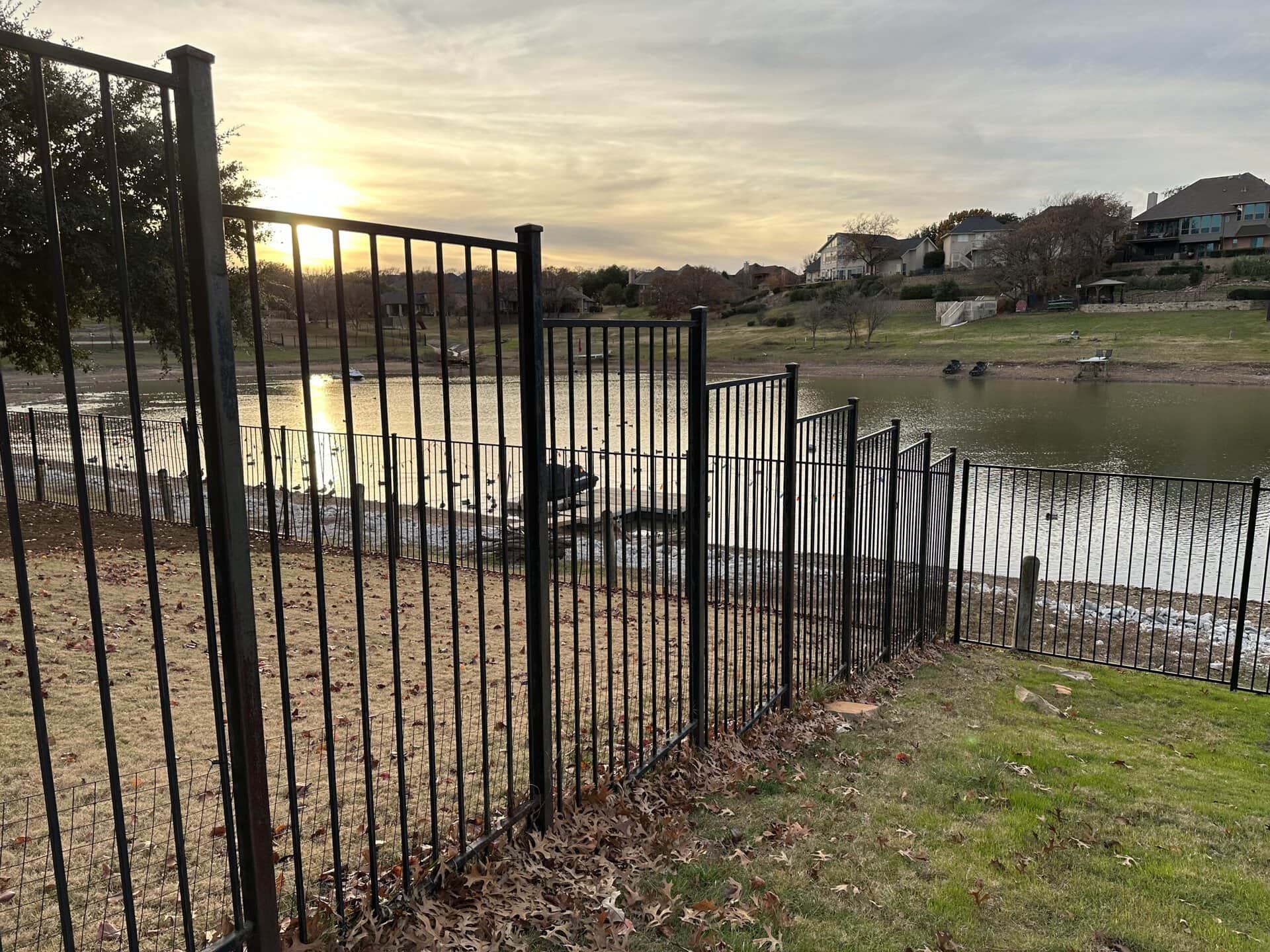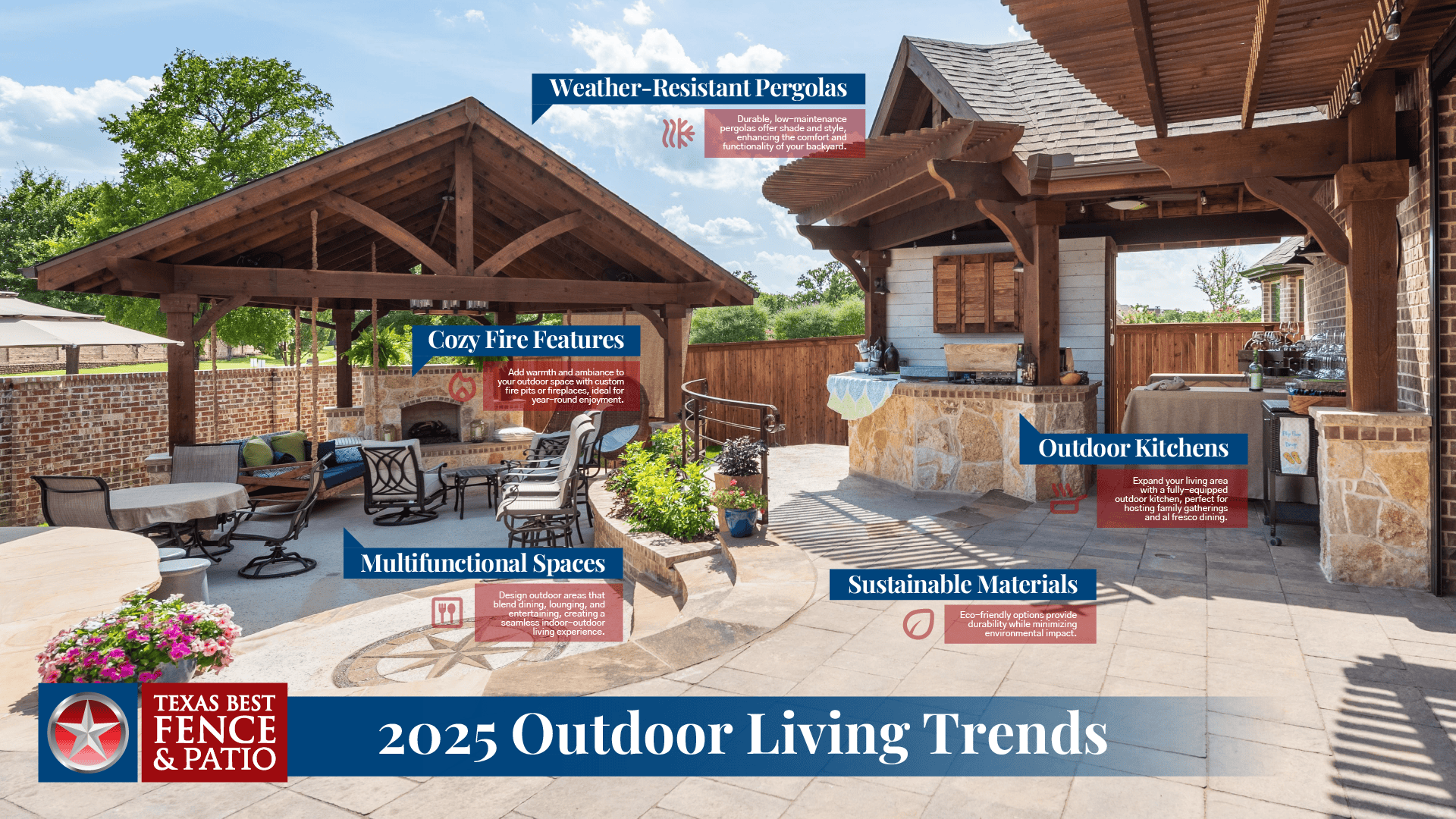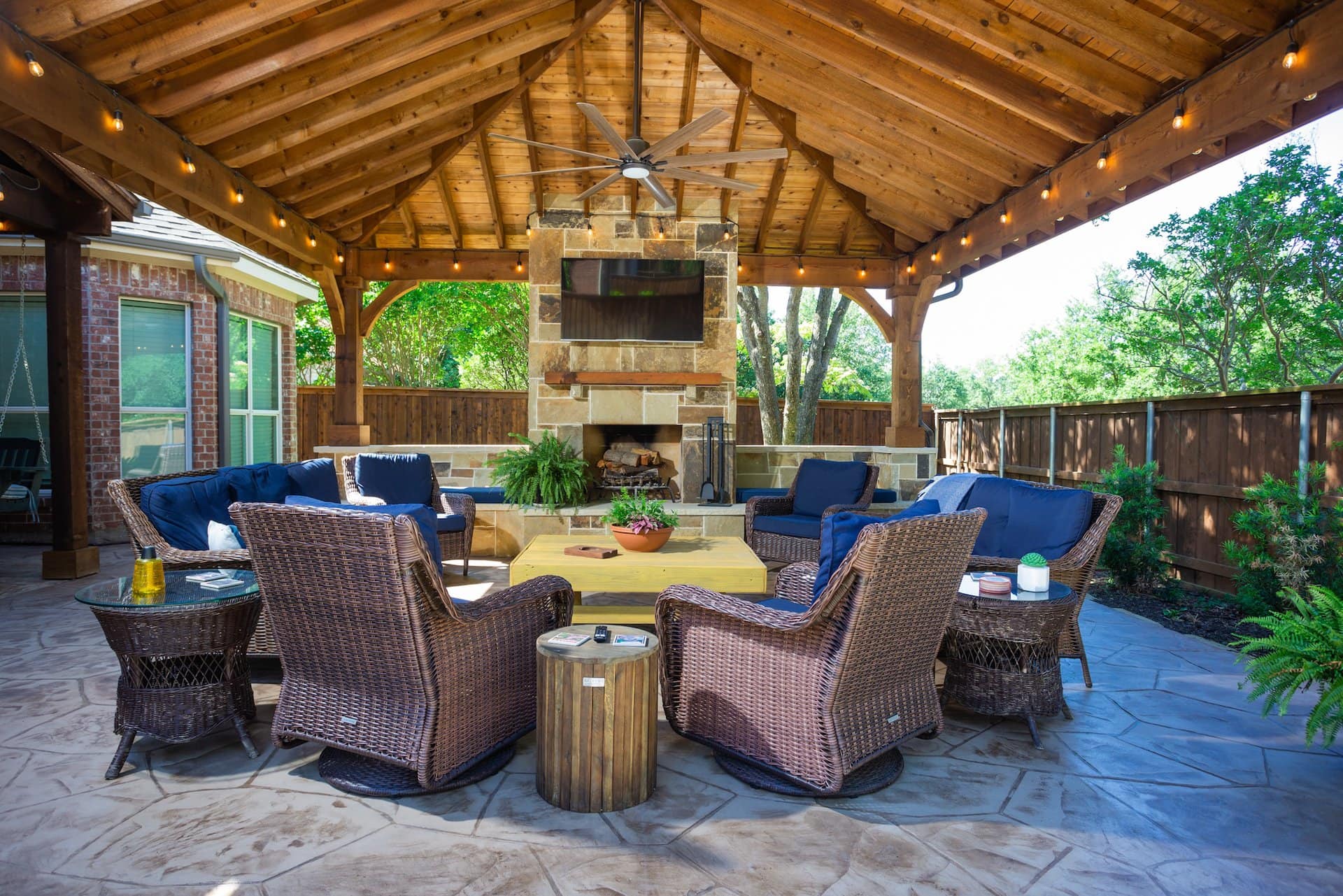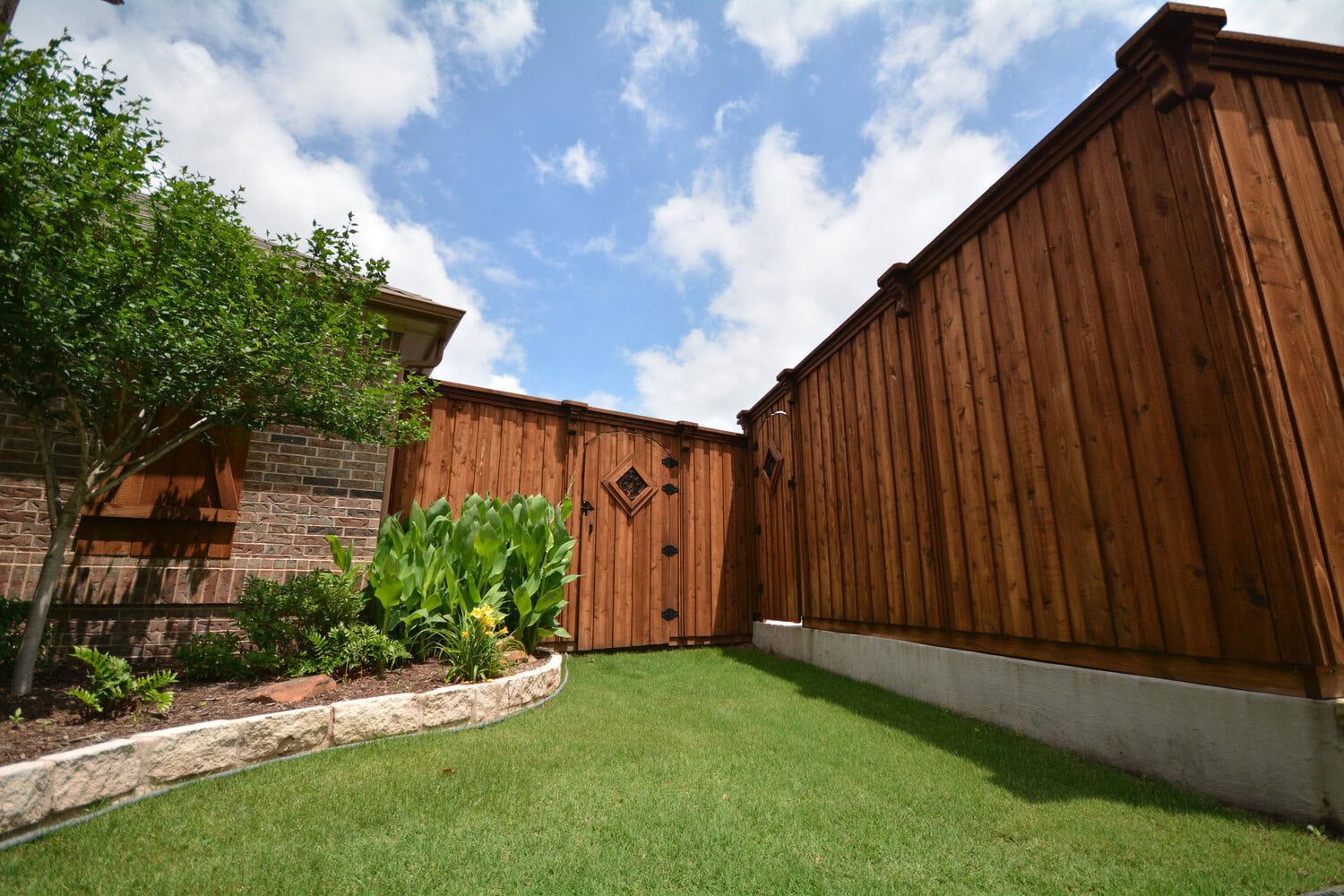Choosing the Right Fence: An Expert Guide
Are you a homeowner looking to spruce up your outdoor living space? Choosing the right fence is not just about enhancing your curb appeal. It’s also about functionality, security, and longevity. But don’t worry, you’re not alone in this. This “Guide to Choosing the Right Fence” is designed to assist you every step of the way.
By making smart choices in construction materials and collaborating with a seasoned, professional wood fence contractor, your new wood fence can become a valuable asset that enhances the safety, enjoyment, and aesthetic appeal of your home.
Understand Your Needs
A crucial first step in our “Guide to Choosing the Right Fence” involves understanding your specific needs. Essentially, why do you want or need a fence? This decision is a significant one, as it directly influences the type of fence you will choose.
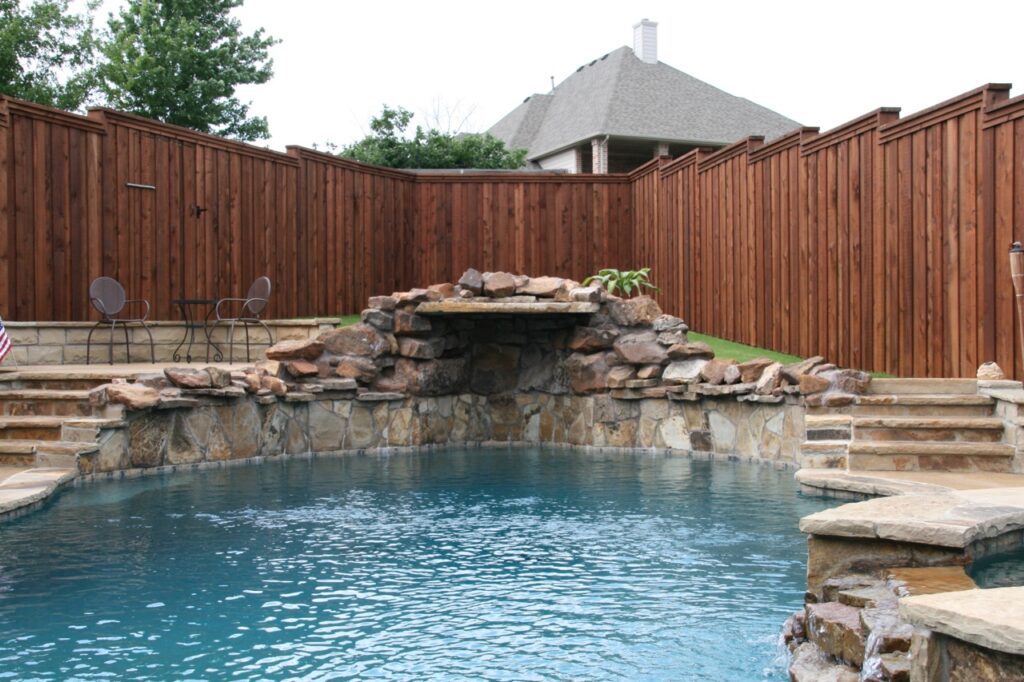
Privacy
If your primary goal is privacy, your optimal choice might be a tall, solid fence with few, if any, gaps. Privacy fences transform your backyard into a secluded oasis, away from the prying eyes of neighbors or passersby. Wood fences are a popular choice for this type of fence, as they can be constructed to provide a high degree of privacy.
Security
For homeowners looking to enhance their home’s security, metal fences such as wrought iron or aluminum can be an ideal choice. These fences, often combined with a secure gate, can discourage unwanted intruders. They provide a sturdy barrier without sacrificing aesthetic appeal. However, keep in mind that many metal fences are designed with bars or open designs that may not provide as much privacy.
Safety
Families with small children or pets might prioritize safety. Fences in this category should be sturdy and tall enough to prevent kids or pets from climbing over. Consider fences with minimal gaps to ensure pets can’t squeeze through, depending on your aesthetic preferences.
Aesthetics
Perhaps your home is missing that finishing touch, and a fence is all you need to tie your landscape together. If enhancing your home’s curb appeal is your primary goal, consider materials like wood or metal, which can be customized to a variety of styles and finishes to complement or even update your home’s design.
Boundary Definition
For some, a fence is necessary to clearly demarcate property boundaries. In this case, you might not need a tall or solid fence. A simple, low picket fence or even a post and rail fence could serve this purpose well. Post and rail fences, frequently depicted in the movies as the defining boundaries of farms and ranches, serve a practical purpose by keeping livestock within set confines. These fences are typically appreciated for their functionality rather than their ornamental appeal.
Noise Reduction
Live near a busy road or in a loud neighborhood? A thick, tall fence can also serve as a sound barrier. In this case, consider materials like masonry or specially designed vinyl fencing, which are excellent for noise reduction.
Remember, understanding your needs is the cornerstone of choosing the right fence. By identifying what you want your fence to accomplish, you’re on your way to making a wise investment that combines functionality with style. This is a central part of our guide to choosing the right fence, and Texas Best Fence is here to assist in your decision-making process.
Choose the Right Material
After identifying your specific fencing needs, the next step in our “Guide to Choosing the Right Fence” involves selecting the right material. Different materials bring varied aesthetics, require distinct maintenance levels, and offer unique longevity.
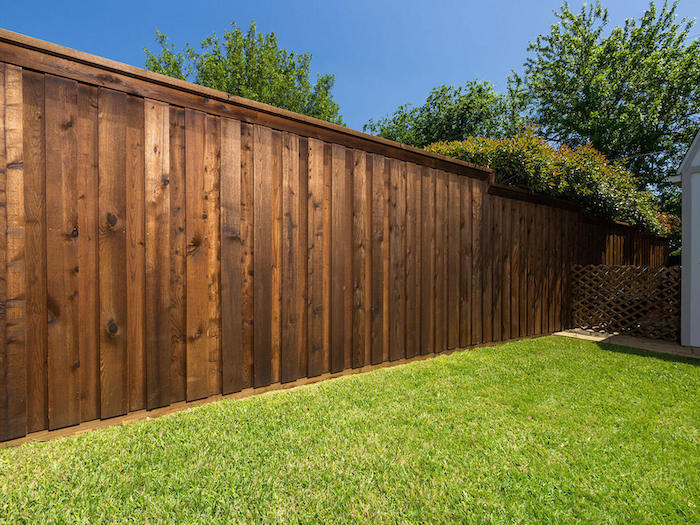
Wooden Fences
Wood fences are a popular choice due to their natural beauty and versatility. You can fashion it into anything from a quaint picket fence to a tall privacy barrier. However, wood does require regular maintenance. Expect to repaint or re-stain your wooden fence every few years to keep it looking its best and protect it from weather and pests.
Metal Fences
Metal fences, including iron, steel, and aluminum options, offer robust security and a lifespan that surpasses wood and vinyl. They’re strong, resistant to most forms of damage, and require relatively little maintenance. A metal fence could be a perfect choice if you value security and longevity.
Composite Fences
A newer entrant to the fencing market, composite fences are made from a blend of wood fibers and plastic polymers. This material combines the natural appearance of wood with the durability of synthetic materials, resulting in a fence that is both aesthetically pleasing and low maintenance.
In our “Guide to Choosing the Right Fence,” we emphasize the importance of choosing the right material as it plays a significant role in the fence’s aesthetic, functionality, longevity, and maintenance requirements. As experts in the field, Texas Best Fence is here to help you weigh these factors and make the best choice for your home and lifestyle.
Consider Local Regulations and Homeowners Association (HOA) Rules
It’s crucial not to overlook this step in our “Guide to Choosing the Right Fence.” Your local municipality or HOA likely has regulations that govern fencing. Ignoring these could lead to fines, disputes with neighbors, or the costly and time-consuming task of modifying or removing your newly installed fence.
Local Zoning Laws
Local zoning laws are regulations set by your city or county that can dictate various aspects of your fence, including its height, location, and sometimes even the materials or colors. For example, most municipalities have rules about how high a fence can be, particularly when it borders public property or rights-of-way. Some towns also have “clear sight” regulations, which limit fence heights to ensure drivers can see oncoming traffic.
There might also be rules about fencing around swimming pools for safety reasons or regulations related to wildlife corridors in more rural or wildland-urban interface areas.
Before you install a fence, check with your local zoning office to understand any restrictions. You may also need to obtain a permit before construction begins.
Homeowners Association (HOA) Rules
If you live in an HOA community, you’ll need to consider the HOA’s rules and regulations. These can be even more specific than local zoning laws and might dictate fence style, color, height, and materials to maintain a consistent aesthetic in the neighborhood.
Before proceeding with any fence installation, check your HOA’s governing documents or consult with the HOA board. Some HOAs require homeowners to submit their plans for approval before construction, so factor this into your project timeline.
In our “Guide to Choosing the Right Fence,” we stress the importance of adhering to local and HOA regulations. It may seem like a tedious step, but it’s crucial to avoid potential issues down the line. At Texas Best Fence, we’re familiar with local rules and HOA regulations in our service areas around North Texas. We can guide you through this process to ensure your new fence meets all the necessary criteria.
Maintaining Your Fence
After you’ve selected and installed the perfect fence for your home, ensuring it stays in excellent condition is key. This not only preserves its appearance and functionality but also extends its lifespan, providing you with a better return on your investment.
Wooden Fences
Wooden fences, while charming and versatile, demand the most maintenance. To protect against weather damage, wood rot, and pests, you should paint or stain your wooden fence every 3-5 years. Regularly inspect for signs of damage or wear, repairing any loose or broken boards promptly. To mitigate wood rot, try to keep the bottom of your fence clear of grass and vegetation.
Metal Fences
Metal fences, such as those made from iron, steel, or aluminum, are relatively low maintenance. However, they may develop rust over time, especially in humid or rainy climates. Regular inspection for rust spots, followed by timely treatment with a rust converter and fresh paint, will keep a metal fence in top shape for years. Additionally, ensuring the fence’s footings or posts are secure and not eroding is crucial.
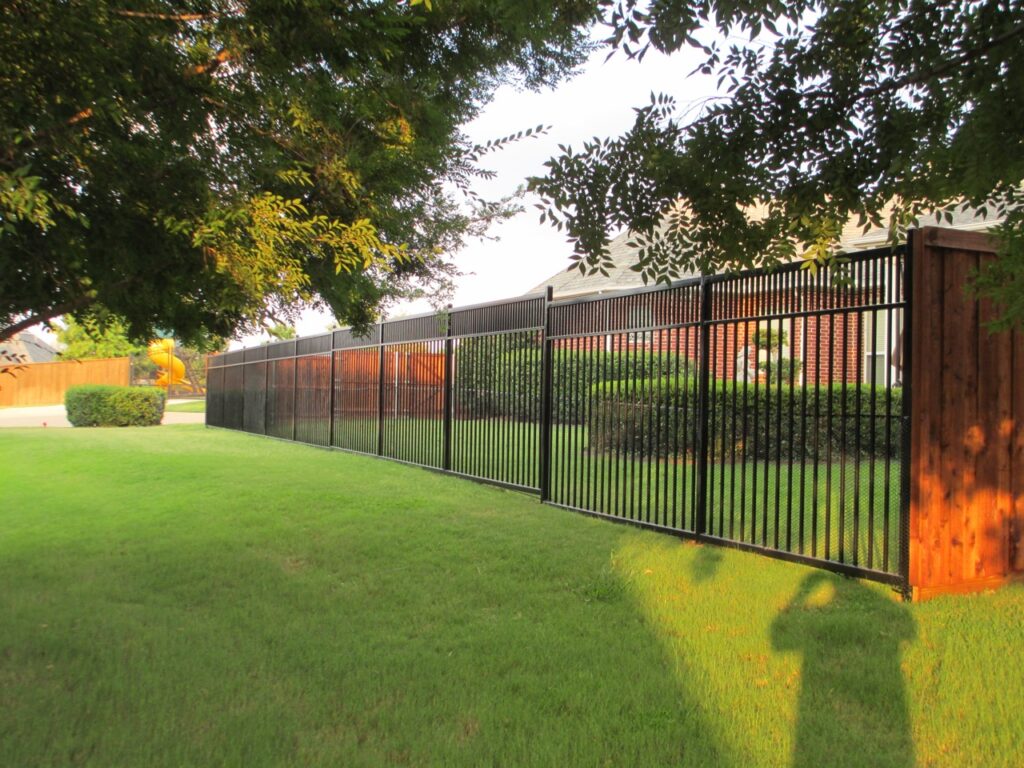
Composite Fences
Composite fences, due to their mixture of wood fibers and plastic polymers, offer a blend of natural appeal and low maintenance. They don’t require painting or staining but should be cleaned periodically with soap and water to remove any dirt or mildew buildup.
In our “Guide to Choosing the Right Fence,” we advocate for regular maintenance as a crucial step in preserving your fence’s aesthetic and prolonging its lifespan. We’re more than happy to provide detailed care tips specific to your chosen fence material. Ensuring it remains an asset to your property for years to come.
RELATED: Learn about the Essential Tips for Building a Fence
Conclusion
In conclusion, remember that your fence is a long-term investment, enhancing your home’s value and appeal. Use this “Guide to Choosing the Right Fence” as a tool, but don’t hesitate to reach out to us for personalized advice.
At Texas Best Fence and Patio, we pride ourselves on our expert craftsmanship, tailored advice, and exceptional customer service. We’re here to help you navigate this journey, turning your outdoor space into a haven that reflects your personal style and meets your needs.
Take the first step towards upgrading your outdoor living space today. Follow our guide to choosing the right fence, reach out to us, and let’s make your dream home a reality together. Because when it comes to fences, we’re not just good. We’re Texas’ Best.
Recent Posts
Categories
Request an Estimate Today
and their uses, you can create a concept that works for your
family. Keep in mind the purpose of the structure, whether natural
light in your home is a factor, and where you want the focal point
of your backyard to be. Once your gears get turning, reach out to
request an estimate on your concept.


